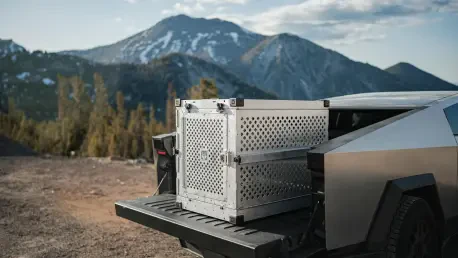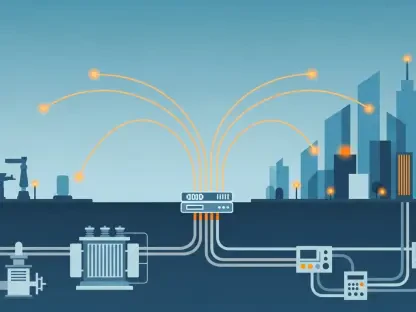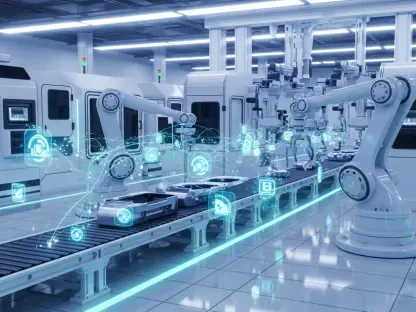Setting the Stage for Innovation in Law Enforcement
The landscape of law enforcement is undergoing a seismic shift as technology races to meet the demands of modern policing, with electric vehicles emerging as a surprising yet powerful tool in this transformation. In Las Vegas, a fleet of Tesla Cybertrucks has rolled out onto the streets, spearheading what could be a transformative era for police departments nationwide. Deployed by the Las Vegas Metropolitan Police Department (LVMPD), this initiative marks a bold intersection of sustainability and public safety, raising questions about how far technology can push the boundaries of traditional policing. What happens when a vehicle designed for futuristic aesthetics and raw power becomes a cornerstone of community protection?
This review dives deep into the specifics of the Tesla Cybertruck as a police vehicle, examining its tailored features, real-world performance, and the broader implications of its adoption. The focus remains on the LVMPD’s deployment, which stands as the largest of its kind in the United States, offering a unique case study in technological integration. By unpacking the capabilities and challenges of this electric behemoth, a clearer picture emerges of its potential to redefine law enforcement practices.
Diving into the Cybertruck’s Police-Specific Features
Design Modifications for Duty
The Tesla Cybertruck, in its police configuration, has been significantly adapted to meet the rigorous demands of law enforcement. Equipped with bulletproof exteriors, the vehicle offers a robust shield against threats that officers face in high-risk scenarios. Additional battery capacity ensures an extended operational range, a critical factor during long patrols or emergency responses, while custom fittings like shotguns, shields, and ladders enhance tactical readiness. These modifications aim to provide a distinct edge over conventional squad cars, prioritizing officer safety through reinforced design.
Beyond physical enhancements, the vehicle’s angular, imposing structure serves as both a visual deterrent and a practical asset. The integration of specialized equipment reflects a deliberate effort to align the Cybertruck with the unique needs of policing, from rapid response to crowd control. Such alterations suggest a forward-thinking approach, positioning the vehicle as more than just transportation but as a mobile command unit ready for diverse challenges.
Performance Metrics and Technical Edge
On the performance front, the Cybertruck brings electric efficiency to the forefront, reducing fuel costs and aligning with sustainability goals increasingly prioritized by public institutions. Its shorter turning radius proves advantageous in urban environments like Las Vegas, where tight streets and sudden maneuvers are commonplace during pursuits or emergency calls. The electric powertrain delivers instant torque, enabling swift acceleration that can be crucial in high-stakes situations such as barricades or active shooter responses.
Reliability, however, remains a point of scrutiny. Tesla has faced recalls for issues like detachable panels and overly bright lights, though assurances from the LVMPD indicate these concerns have been addressed prior to deployment. The manufacturer’s commitment to refining the vehicle for law enforcement applications is evident, yet the real test lies in sustained performance under the unpredictable conditions of police work. Technical capabilities show promise, but durability in the field will ultimately define success.
Real-World Deployment and Impact
On the Streets of Las Vegas
The rollout of the Cybertruck fleet by the LVMPD represents a significant experiment in merging cutting-edge technology with everyday policing. Intended for patrolling the bustling streets of Las Vegas, these vehicles are positioned to handle a spectrum of duties, from routine traffic enforcement to critical incident response. The fleet, comprising 10 units, benefits from a substantial private donation valued at $2.7 million, easing the financial burden on taxpayers while introducing advanced tools to the force.
Initial feedback from department leadership, including Sheriff Kevin McMahill, highlights optimism about enhanced officer safety and operational efficiency. The Cybertruck’s features are expected to shine in scenarios requiring rapid deployment or fortified protection, potentially setting a new standard for urban policing. Community safety missions, in particular, could see a boost as the vehicles project authority while navigating challenging environments with ease.
Broader Industry Trends
This deployment aligns with a national trend toward integrating electric vehicles into public service, as several U.S. police departments adopt Tesla models despite surrounding controversies. The push for modernization reflects a growing emphasis on sustainability and cost-effectiveness, with electric fleets promising long-term savings on maintenance and fuel. Private contributions, like the one from Silicon Valley investors Ben and Felicia Horowitz, accelerate this shift, though they also spark debates about influence over public policy.
The trend extends beyond mere vehicle adoption to encompass broader technological integration, including drones and data systems, often supported by similar private-public partnerships. While innovation drives progress, the balance between corporate involvement and departmental autonomy remains delicate. The LVMPD initiative could serve as a benchmark, influencing how other cities approach tech-driven policing in the coming years.
Challenges and Ethical Considerations
Technical and Reliability Hurdles
Despite its impressive specs, the Cybertruck’s history of technical issues casts a shadow over its adoption for police use. Past recalls for design flaws raise valid concerns about reliability during critical operations, even if current units have been updated to meet safety standards. The high-stakes nature of law enforcement demands vehicles that perform flawlessly under pressure, and any glitch could have serious consequences for officers and civilians alike.
Moreover, the complexity of maintaining an electric fleet introduces logistical challenges. Specialized training for mechanics and the availability of parts could strain departmental resources, especially in smaller jurisdictions considering similar adoptions. While Tesla’s support promises solutions, the practical realities of integrating such advanced technology into daily operations warrant close monitoring.
Ethical Dilemmas and Public Perception
The ethical implications of this initiative are as significant as the technical ones, particularly regarding the role of private donations in public safety. The Horowitz family’s ties to Tesla and broader tech investments fuel concerns about corporate influence over policing priorities, potentially skewing decisions toward profit-driven agendas. Such partnerships, while financially beneficial, risk undermining public trust in the impartiality of law enforcement.
Public perception further complicates the narrative, with critics pointing to the Cybertruck’s militaristic design as a symbol of intimidation rather than protection. Community advocates argue that this could widen the gap between police and residents, especially in areas already tense with authority. Privacy risks, amplified by Tesla’s data access capabilities as seen in unrelated incidents, add another layer of contention, demanding robust safeguards to protect sensitive information.
Reflecting on a Pioneering Yet Polarizing Step
Looking back, the integration of the Tesla Cybertruck into the LVMPD fleet stood as a daring leap into uncharted territory for law enforcement technology. Its innovative features, from bulletproof exteriors to electric efficiency, offered tangible benefits that could have reshaped patrol dynamics, while the financial relief from private funding underscored pragmatic solutions to budget constraints. Yet, the hurdles of reliability, ethical concerns over corporate sway, and public skepticism painted a complex picture of its early impact.
Moving forward, the focus should shift to establishing clear guidelines on private-public collaborations, ensuring transparency in how donations influence policy. Rigorous testing and public reporting on the Cybertruck’s performance could build trust, addressing reliability fears head-on. Additionally, engaging community stakeholders in dialogue about the role of such technology might mitigate perceptions of militarization, fostering a collaborative path toward safer streets. This pioneering step, though fraught with challenges, opened doors for refining how advanced tools serve public safety, provided lessons are heeded.









